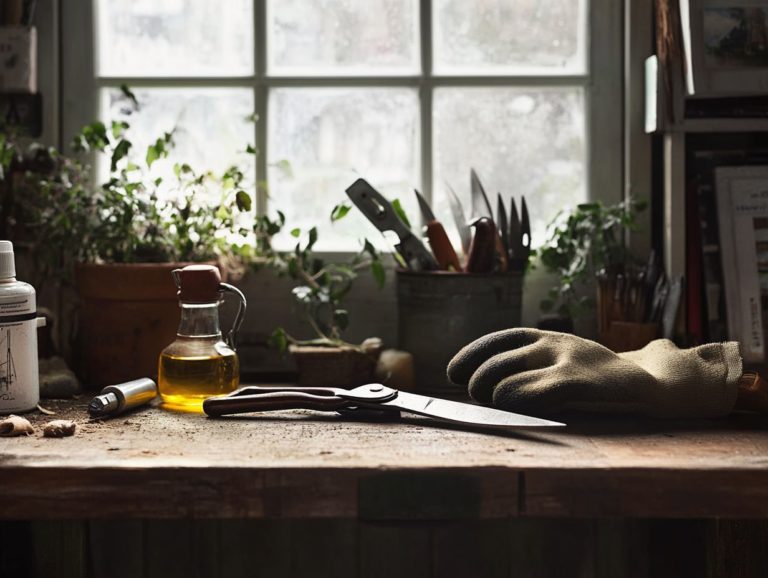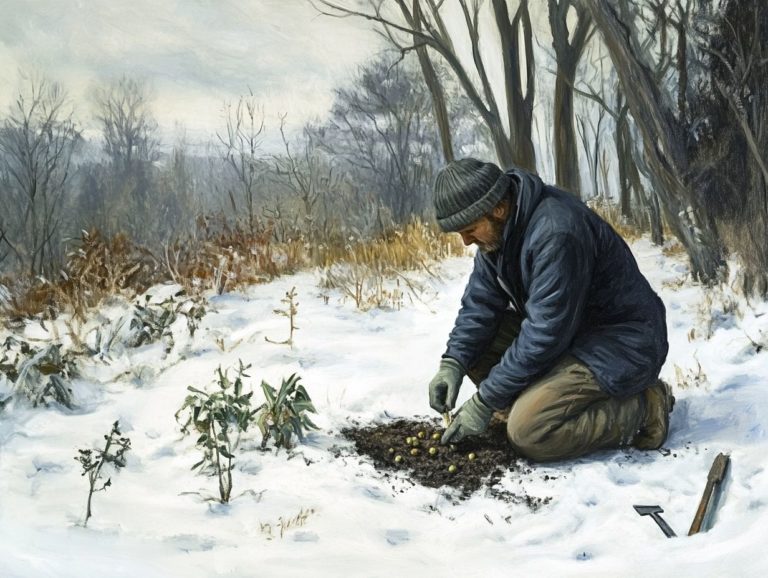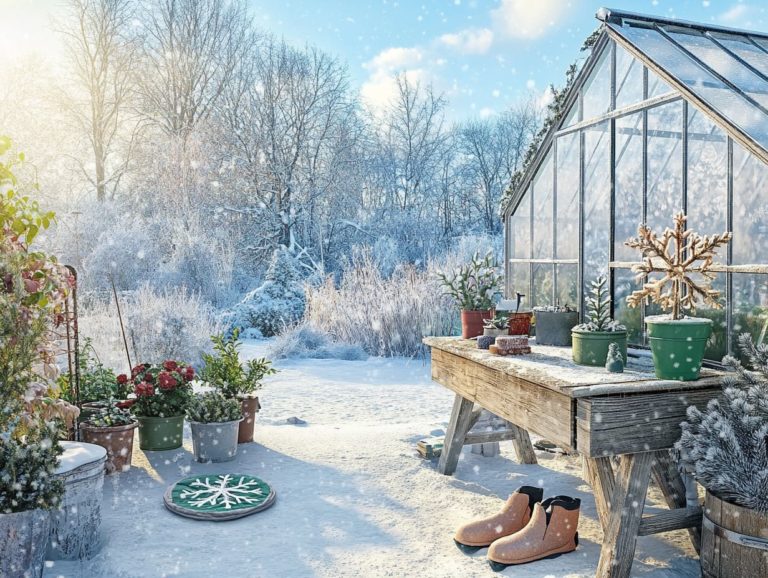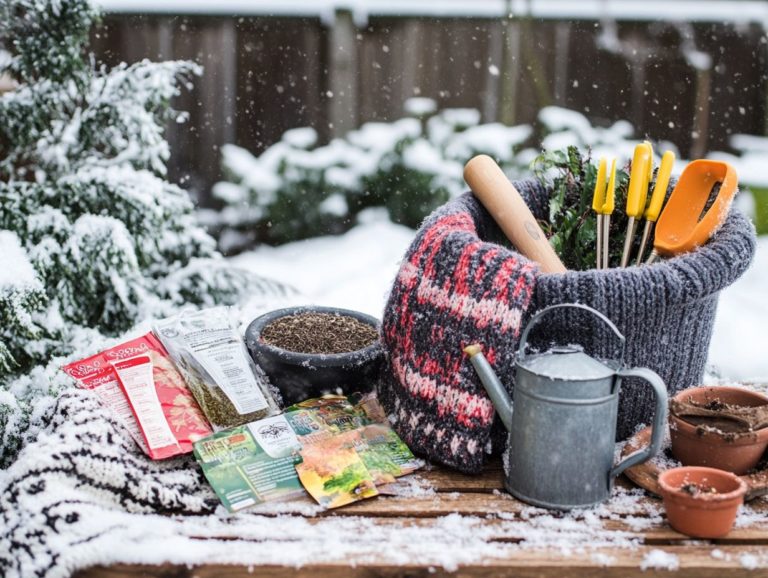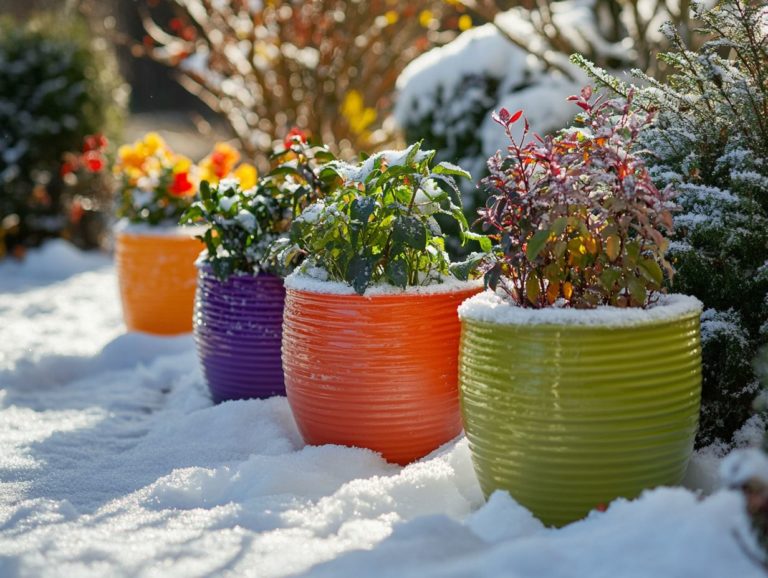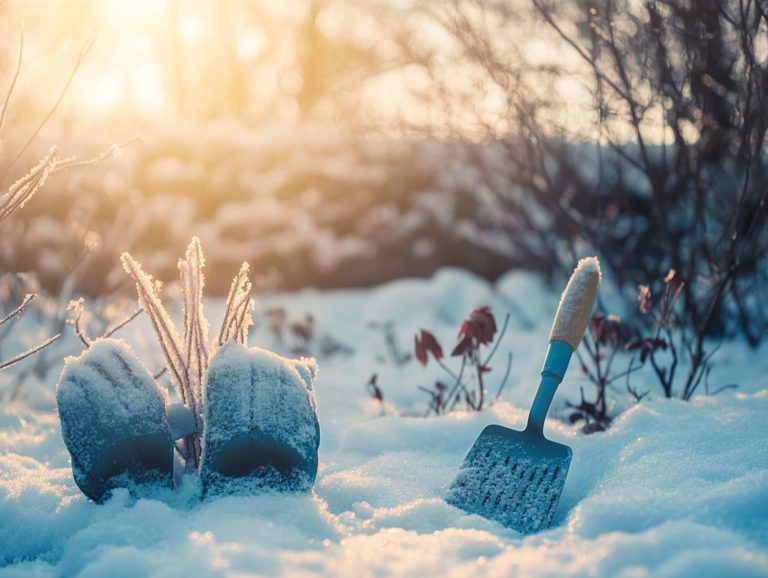How to Choose the Right Spade for Cold Climates
Choosing the right garden spade is essential, especially when facing the unique challenges of cold climates.
Whether you re managing heavy snowfall or breaking through stubborn ice, having the right tools can transform your experience. This guide will help you find the best factors to consider, such as handle design, blade shape, and overall spade weight.
You ll also discover the best garden spade types suited for winter weather, along with vital maintenance tips for effective use. Get ready for winter by choosing the perfect garden spade now!
Contents
- Key Takeaways:
- Why Choosing the Right Spade Matters
- Factors to Consider When Choosing a Spade
- Types of Spades for Cold Climates
- Tips for Using a Spade in Cold Climates
- Frequently Asked Questions
- What factors should I consider when choosing a spade for cold climates and what does a spade buying guide suggest?
- What materials should I look for in a cold-weather spade?
- Is the weight of the spade important for cold climates?
- Should I consider the grip of the spade handle for cold climates?
- How can I ensure the durability of my spade in cold climates?
- Can I use any spade in cold climates?
Key Takeaways:
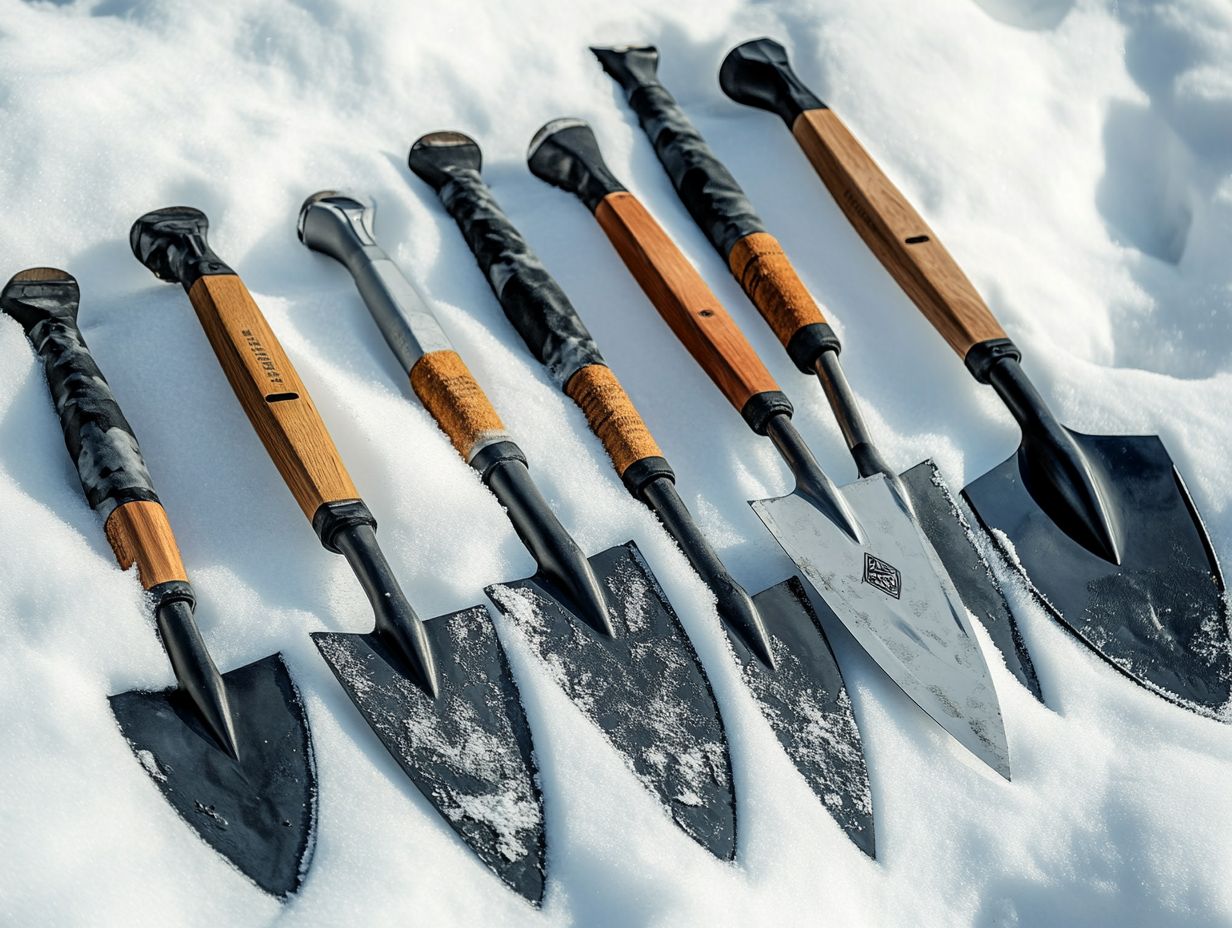
- Choose a durable spade with a sturdy handle and the right length for your height to prevent strain while shoveling in cold climates.
- Also, a pointed spade with a curved blade can improve performance in icy and snowy conditions.
- Proper maintenance can prolong your spade’s lifespan and enhance its effectiveness in removing snow and ice.
Why Choosing the Right Spade Matters
Selecting the right digging spade is important for improving your gardening. It influences your performance and ensures your comfort during various tasks.
A spade designed to meet your needs, like a transplanting spade, can significantly boost your performance in soil digging, transplanting, and garden maintenance, ultimately benefiting your plants and the visual appeal of your garden.
With an array of choices available from digging techniques for precise digging to comfortable designs that reduce strain grasping the significance of choosing the best garden spade is essential for both novice and seasoned gardeners alike.
Factors to Consider When Choosing a Spade
When choosing the ideal spade types for your gardening, consider factors that ensure you re investing in a tool that offers both comfort and functionality.
Key elements include the spade weight, handle design, and blade material. These aspects affect ease of use and impact the tool’s durability and effectiveness across different soil types.
Whether you prefer a lightweight spade to reduce fatigue or a robust option made from stainless steel or carbon steel, understanding these spade features is crucial for making a smart purchase.
Handle Material and Length
The material and length of your spade shaft are vital for your comfort and tool efficiency, directly affecting how effectively you manage your gardening tasks. Handles made from materials like wood, fiberglass, or metal provide varying levels of durability and grip comfort, so choose wisely.
The length should match your height and gardening style, providing the right leverage and minimizing back strain.
When selecting a handle, consider ergonomic designs that enhance comfort during lengthy gardening sessions. For instance, comfort grips can absorb shock and prevent slippage, while contoured shapes support the natural positioning of your hands.
Ultimately, picking the right handle length typically between 36 and 48 inches greatly impacts your ease and efficiency, allowing you to utilize various digging methods with minimal effort.
Equip yourself now and transform your winter gardening experience!
Blade Material and Shape
The material and shape of a digging spade are crucial for its performance, effectiveness, and longevity in various soil types. Carbon steel blades are strong and great for penetrating tough soil. In contrast, stainless steel blades resist corrosion and are easy to clean.
The blade shape pointed for precision digging or broad for scooping significantly affects how efficiently you can perform different digging techniques.
Understanding the pros and cons of these materials helps you choose the ideal garden equipment for your tasks. For example, when dealing with hard-packed clay or rocky soil, a carbon steel blade is essential for effective digging methods. Conversely, if you often work in damp environments, a stainless steel spade is the best option due to its rust resistance and ease of cleaning.
Blade shapes can vary; a pointed blade is perfect for creating narrow trenches, while a rounded blade excels at moving soil or compost, enhancing your garden design. This demonstrates how both material and design work together to improve your gardening experience.
Weight and Balance

The weight and balance of your garden spade are vital for shaping your gardening experience. They affect ease of use, comfort, and overall performance. A lightweight spade can reduce fatigue during long hours in the garden. A well-balanced design makes the tool feel stable and easy to maneuver, allowing you to execute your digging techniques effortlessly.
When facing various soil types, a heavier spade can help break through compact earth, while lighter options work well in sandy or loamy soils.
Tools designed for comfort minimize back strain and improve precision during planting and weeding tasks. This thoughtful construction allows you to apply optimal force without sacrificing comfort, enhancing your overall gardening experience.
By considering both weight and ergonomic features, you can customize your tools to meet specific gardening techniques, maximizing performance while prioritizing your health.
Types of Spades for Cold Climates
In cold climates, choosing the right type of spade is essential for effective gardening, especially for snow and ice removal. Options include heavy-duty spades for digging, snow shovels for clearing pathways, and specialized ice spades for breaking through frozen ground.
Familiarizing yourself with these garden tools can significantly boost your gardening efficiency and ensure your safety during winter.
Shovel Spades
Shovel spades are great for heavy-duty digging and earth-moving tasks, making them essential for gardeners in cold climates. With broad and sturdy blades, these spades excel at soil digging and lifting, even in frozen ground. This versatility is invaluable for garden projects requiring significant earth displacement.
Beyond their robust design, shovel spades are effective in various digging techniques, whether you re slicing through compacted soil or turning over stubborn turf. This adaptability enables you to handle different gardening tasks, from transplanting large shrubs to digging deep holes for new plants.
The comfortable handles enhance efficiency, especially during extended use in the cold. Reviews often praise the shovel spade as a top-tier tool for those facing challenges in winter gardening, solidifying its esteemed reputation in the gardening community.
Are you ready to tackle tough gardening tasks this winter? Choose the right spade today and transform your gardening experience!
Snow Shovels
Snow shovels are expertly designed garden tools that help you efficiently clear snow from driveways, pathways, and garden areas. This ensures safety and accessibility throughout the winter months. You’ll often find them equipped with a broader blade for scooping and pushing snow, enhancing functionality.
Many models also boast ergonomic designs that minimize strain on your back. Choosing a lightweight snow shovel can significantly ease the physical demands of snow removal, making it an essential addition to your garden equipment.
When selecting the right snow shovel, consider the specific spade features tailored to different snow conditions. For example, a curved shovel is great for heavy, wet snow, while a flatter blade is perfect for lighter, powdery snow, enhancing overall performance.
Look for ergonomic features like adjustable handles and padded grips; these can greatly enhance your comfort during extended use. Opting for a shovel made from durable materials ensures longevity, making it a reliable tool not only for winter maintenance but also for occasional gardening tasks as the seasons change, as mentioned in garden tool reviews.
Ice Spades
Ice spades are your secret weapon for conquering frozen soil and ice. They are critical for keeping your garden healthy through the winter months and for garden maintenance. With their sharp, sturdy blades designed to penetrate hard surfaces, these tools enable you to dig and aerate the soil even when conditions are less than ideal.
Adding an ice spade to your gardening toolkit can dramatically elevate your ability to nurture your garden year-round. These tools come with long handles that provide excellent leverage, making maneuvering a breeze while reducing strain on your back.
The ergonomic design ensures you stay comfortable during extended use, minimizing fatigue as you tackle those ice-covered patches. When selecting the best garden spade, consider its functionality and comfort.
An ice spade is a must-have for tackling tough soil when preparing planting beds in late winter or early spring. By incorporating this tool into your routine, you enhance soil aeration and drainage, ultimately bolstering the health of your garden ecosystem.
The ability to clear away unwanted ice sets the stage for optimal planting conditions, allowing roots to establish themselves more effectively as temperatures begin to rise.
Tips for Using a Spade in Cold Climates
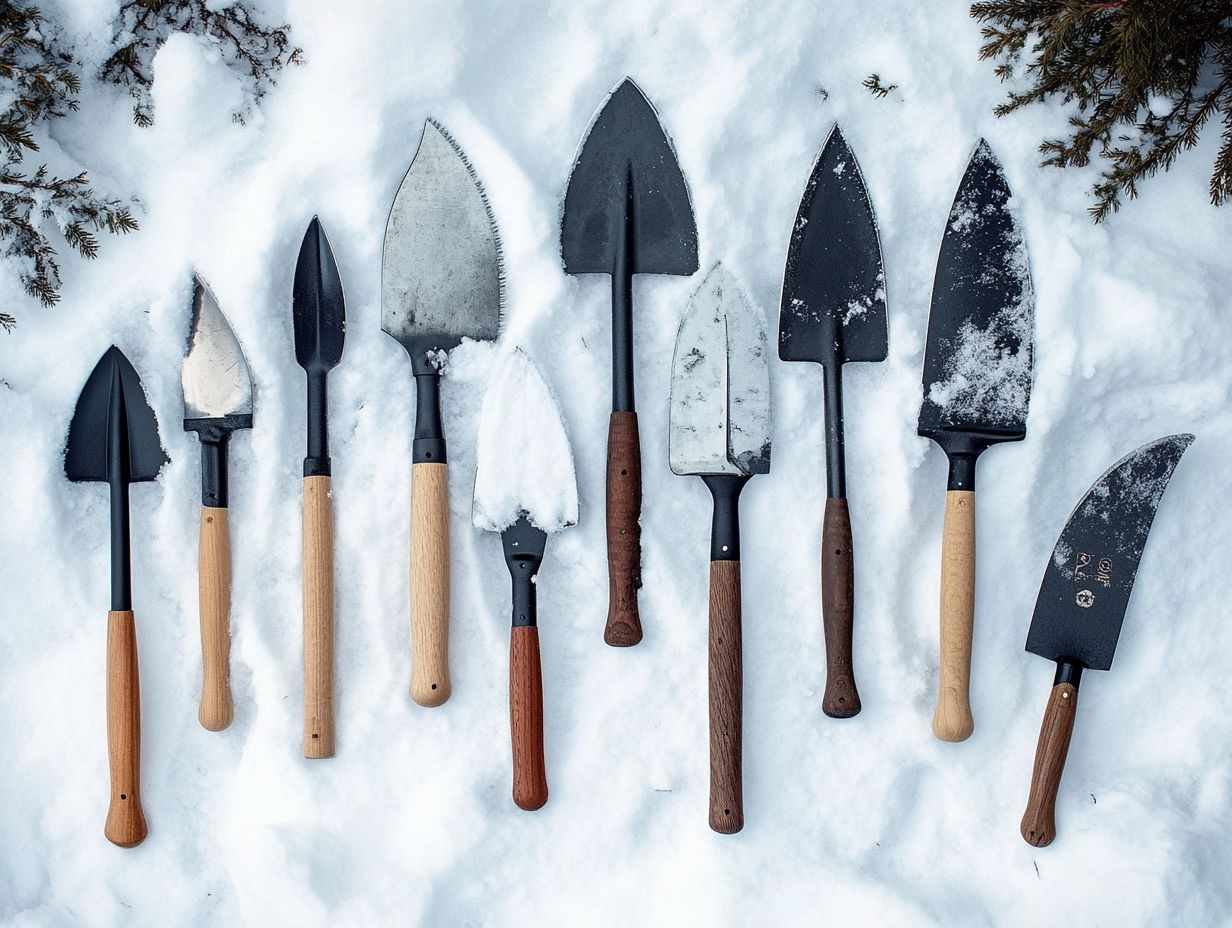
Effectively using a spade in cold climates demands an understanding of the proper techniques tailored for the nuances of snow and ice removal. A commitment to maintaining your garden tools for longevity is also essential. Implementing these digging techniques can greatly enhance your performance.
By implementing the right methods, you can significantly boost your efficiency while minimizing physical strain. Whether you’re wielding a garden spade for digging or a snow shovel for clearing pathways, mastering the use and care of these tools is essential for achieving gardening success in winter conditions.
Don t miss out on the right tools for your gardening routine! Get your snow shovel or ice spade today and tackle winter like a pro!
Proper Technique for Snow and Ice Removal
Implementing the right technique for snow and ice removal is essential for maintaining safety and efficiency during your winter gardening tasks. By utilizing proper posture and movements, you can significantly reduce the risk of back strain while maximizing the effectiveness of your tools, whether it s a snow shovel or an ice spade.
Key strategies include using your legs to lift instead of your back and tackling small sections to avoid feeling overwhelmed. Understanding different soil types can further aid your approach.
Integrating tools designed for comfort can greatly enhance your experience during these challenging chores. Choose snow shovels with curved handles to minimize excessive bending, allowing you to maintain a more upright posture. To improve your grip on icy surfaces, consider a quality ice scraper with a comfortable handle.
Don t forget to take frequent breaks; they promote your physical well-being and help prevent fatigue, making the task more manageable. Incorporating garden maintenance practices can also improve your overall comfort and efficiency. Layering your clothing will help keep you warm without sacrificing mobility, ensuring you remain agile as you confidently face the winter elements.
Maintaining and Storing Your Spade
Keep your spade in great shape! Regular cleaning and proper storage make your tools last longer and perform better, especially during the demanding winter gardening months. Regularly cleaning tools after use preserves materials like carbon steel and stainless steel, extending their lifespan by preventing rust and corrosion.
Adopt effective storage practices, such as keeping your spade in a dry, sheltered location. If you re using a carbon steel spade, apply a light coat of oil after cleaning to provide additional protection against moisture.
While stainless steel spades are more resistant to rust, they still require routine, careful cleaning especially after exposure to soil digging and plant debris. Avoid leaving your tools outdoors or in damp sheds, as this can accelerate degradation and diminish your gardening efforts. Choose the right spade features to enhance your experience.
By following these maintenance and storage tips, you can significantly boost the lifespan and performance of your gardening spade. Familiarizing yourself with spade types will also help you make informed decisions about which tools to maintain.
Frequently Asked Questions
What factors should I consider when choosing a spade for cold climates and what does a spade buying guide suggest?
When choosing a spade for cold climates, consider the material, weight, handle grip, and durability of the spade. These factors will determine the effectiveness and comfort of using the lightweight spade in cold weather.
What materials should I look for in a cold-weather spade?
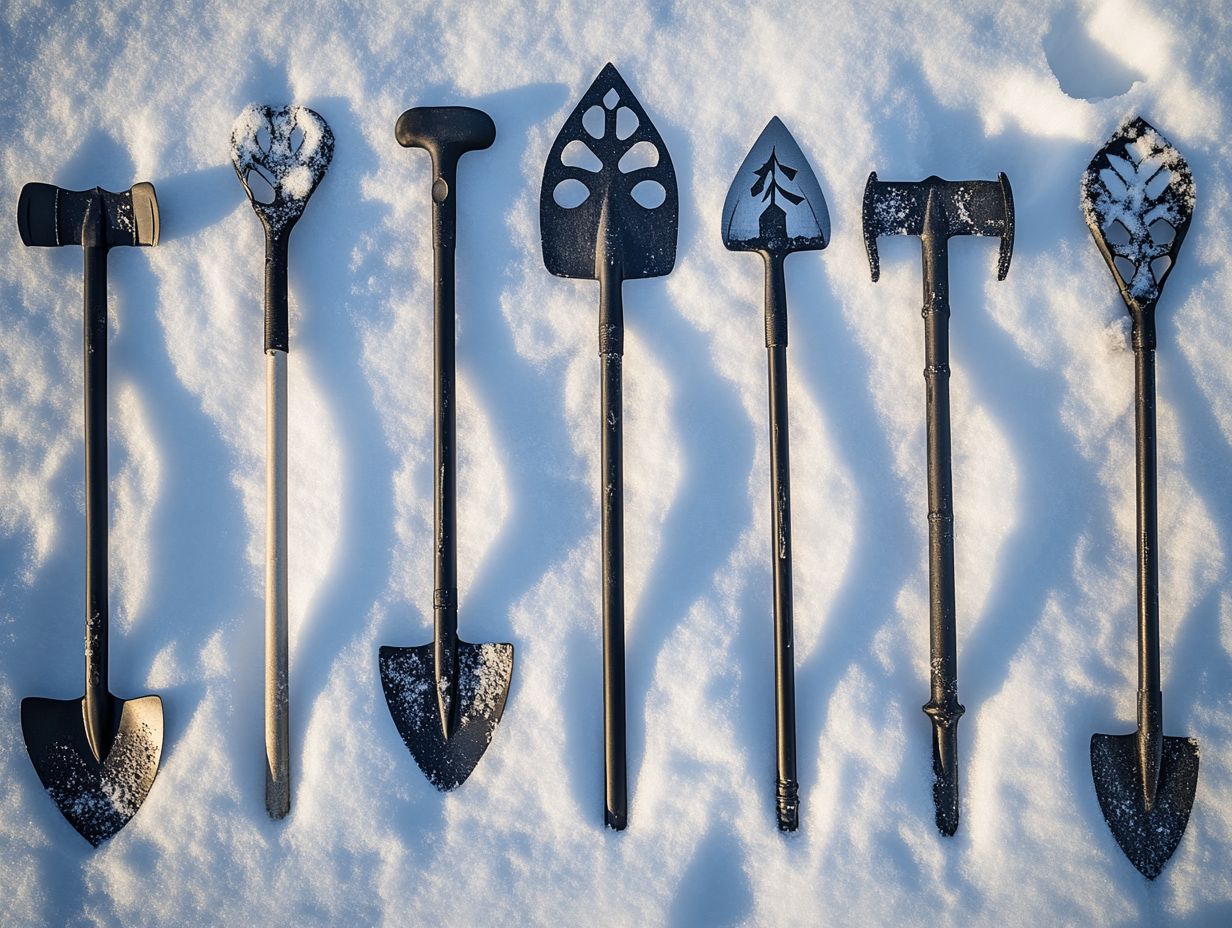
Spades made of stainless steel or aluminum are ideal for cold climates. They are resistant to rust and can withstand extreme temperatures without breaking or cracking. Choose a durable spade to ensure strong performance in harsh conditions.
Is the weight of the spade important for cold climates?
Yes, the weight of the spade is important for cold climates. A lightweight spade is easier to use in the cold, as you won’t have to exert as much force to dig through frozen ground. Consider spade weight as a critical factor in your choice.
Should I consider the grip of the spade handle for cold climates?
Absolutely! The grip of the spade handle is crucial for use in cold climates. Look for spades with ergonomic handles that provide a comfortable and secure grip, even when wearing gloves to prevent back strain.
Ready to tackle winter gardening like a pro? Share your own tips and experiences below!
How can I ensure the durability of my spade in cold climates?
Want your spade to last? Choose one with a strong handle and a durable blade.
Store your spade in a dry place to prevent rust and damage. These simple maintenance tips will help it last longer.
Can I use any spade in cold climates?
Not all spades are suitable for cold weather. Choose a spade designed for winter to ensure it can handle extreme temperatures and effectively dig through frozen soil.

